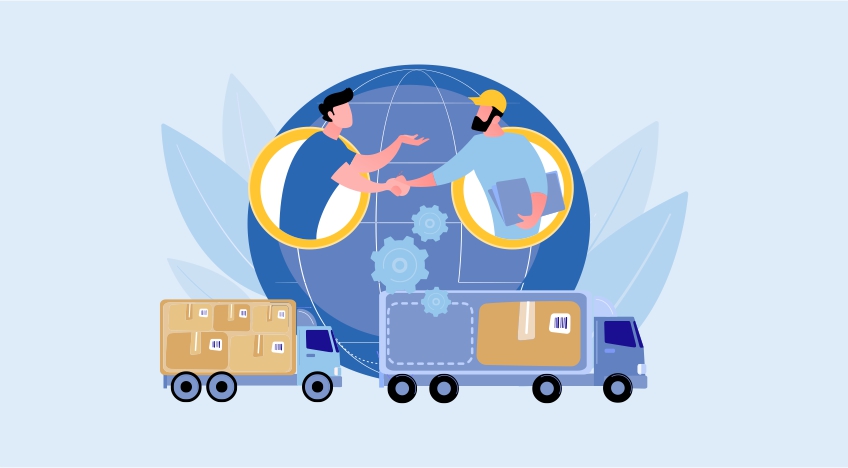- What is microenterprise?
- History of micro-enterprises
- What are the types of micro-enterprises?
- Understanding micro-enterprises
- Why is microenterprise important?
Microenterprises are very small businesses that are started with small amounts of money. Though they are small and operate within a very limited geographical area, they impact the economy. Many non-profit organizations and financial institutions now offer microcredit to people starting microenterprises. Developing countries have understood the importance of micro-enterprises to improve the per capita income of people. Governments and banks are supporting the growth of these businesses. Micro enterprises also improve the quality of life of people in underdeveloped communities.
What is microenterprise?
A microenterprise as the name indicates, is a very small business with a limited number of employees. A micro-enterprise or micro-company is usually launched with a limited amount of capital usually obtained from a bank or some other financial entity. The number of people working in a microenterprise is generally less than ten. They typically provide goods or services to their immediate geographic locality or region.

Microenterprise - Street Vendor
History of micro-enterprises
The history of microenterprises started with the help of microfinance loans can be traced to Bangladesh in the mid-1970s. Muhammad Yunus founded Grameen Bank in 1976, intending to provide microloan financing for the underprivileged and women. It gave them the means to start a business to support themselves. This model has been followed by many other financial institutions around the world and especially in developing nations.
| 5 Cash Flow Forecasting Mistakes That Small Businesses Do | How Automating Reports Boost Business Reporting Process |
What are the types of micro-enterprises?
Micro-enterprises may be small in size, and in the locality they cater to, but collectively they form a significant portion of the economy. Some of the examples of microenterprises are:
- Skill-based service jobs such as landscapers, mechanics, carpenters, plumbers, machine shop operators
- Street vendors
- Shoemakers and menders
- Small scale farmers
- Small food vendors, bakeries, caterers
In most cases, women who start small use their microenterprise loans to buy sewing machines. They then use these machines to earn a modest living. They not only have a source of income but also add the availability of a reasonably priced tailor to the other residents in the locality. When this woman employs more people as assistants, she also provides employment within the community.
Understanding micro-enterprises
Microenterprises are usually financed by microcredit. They are different from the usual business as the borrower usually has no savings, collateral, credit history, or employment history. The amounts that are given as microfinance loans are small but enough to start and run a small business. Microfinance loans are commonly offered by non-profit organizations that operate in these developing regions. Many banks now offer microfinance loans to people. They are charged interest on the loan amount.
These small businesses usually operate within their community. They help in improving the economy of the local community. They also help people in developing countries improve their quality of life by providing a product or service to their community. Micro-enterprises can improve the income, quality of life, and purchasing power of the community. The type of business that is opened depends on the kind of community and their needs. They provide jobs and uplift not only the entrepreneur but the community at large.
By definition, a microenterprise is very small. So, it would be difficult to scale up the business without using aggressive strategies. For example, a small vendor would earn money by selling vegetables from a cart. He can only scale up if he has the means to buy more cars. He would also need to hire people to man each of the carts and perform their duties exactly the way he does.
Even if the vendor could scale up, would he have the mindset or the idea to do so. Many of the people who avail of microfinance loans are first-time entrepreneurs. They do not have any access to financial and business advice. They will be able to maintain the small business scale and provide employment to a small number of people.
However, with the right advice and financial support, a microenterprise can grow simply by taking over similar enterprises and combining them into a single one. This will expand their size and also the localities in which they operate.
There are also many critics of the microenterprise model. Since the loans are unsecured, the interest levels are high. If the person does not succeed at their microenterprise, they get pulled into a vicious cycle of debt with high-interest rates. The loans with high interest rates also take longer to pay off which extends the length of time that the person is in debt. Some people who avail of these loans do not use the money for the purpose that it was meant for further compounding the issue.
The objectives of micro-enterprises
- Job creation: Though they are small, the widespread encouragement of microenterprises creates many jobs for people. These job opportunities are outside the formal employment sector. Without investing huge amounts of money, jobs are created with very little investment. The underdeveloped and backward areas where microfinance schemes are targeted may have few employment opportunities. Microenterprises create jobs within these underdeveloped communities
- By promoting the development of communities at large, the region gets more developed. This, in turn, supports national development
- Microenterprises also use the natural resources that are available in the area of operation
- They improve the living conditions and quality of life of many people and the country as a whole.
- They target the underprivileged. Micro enterprises also help in the upliftment of women.
Why is microenterprise important?
Micro enterprises are essential to boost the economy from the grassroots level. They have many benefits. Since the microenterprises are by definition catering to the locality, they provide services and products that are necessary for the locals. This improves the quality of life for the area by providing a service or product.
Microenterprises that need premises to operate out of use space locally. This improves the locality and also provides a place for the locals to meet. Microenterprises offer a way for the locals to support and help each other to grow.
Operating a microenterprise in a community stimulates the flow of money within that community. Over time it improves the standard of living of the area. Small first-time entrepreneurs are better able to improve the education and lifestyle of the next generation. They also serve as role models and the younger generation will also aspire to open their own businesses. It creates a positive cycle of development and upliftment in the community.

Microenterprise - Tailor
Supporting and encouraging the growth of small-scale industries and micro-enterprises in a country can increase the per capita income in the economy. It can fuel the economic growth of the entire country. Small enterprises can also help bridge the development gap between rural and urban economies.
Micro businesses use the local community resources and skills. If there is an artform or handicraft that is unique to the region, microbusinesses that promote them keep those skills alive. They also make the particular product or service attractive to visitors or tourists, thereby adding another source of income for the community.
Starting a large company that employs thousands of people involves huge sums of money and a larger risk. But, supporting thousands of microenterprises that may only employ one or two people achieves the same employment target with less financial investment and risk. Microenterprises provide a means of living to people who may not have the education or skill set to enter the formal job market.
However, it is essential that the microbusiness owners be provided with the resources and training that they need to succeed in their business. They should also be encouraged to grow beyond micro businesses. In the long term, they offer many benefits to uplift communities. They reduce unemployment rates and lift communities out of poverty. It increases the production and income of the region without large-scale industries that may pollute the region. Microenterprises are a less capital-intensive means of increasing employment rates and the economy of a community, region and country.
Read more:
Small Business Management Tips for Success, Warehouse Management System, How to Write Business Plan, Arm’s Length Transaction, Data Synchronisation, Contingent Liabilities, Convenience Vs Security, 4 Technology Trends which can Reduce your Business Woes, MSME Registration, Best E-commerce Practices for Small Businesses, Key Things to Keep in Mind While Taking a Business Loan, Crowdfunding: Smart funding for SMBs, How the Startup Culture is Impacting the Indian Economy, Digital Marketing & its Advantages to Boost the MSME Sector in India, Tips for a Small Business to Survive the Crisis











